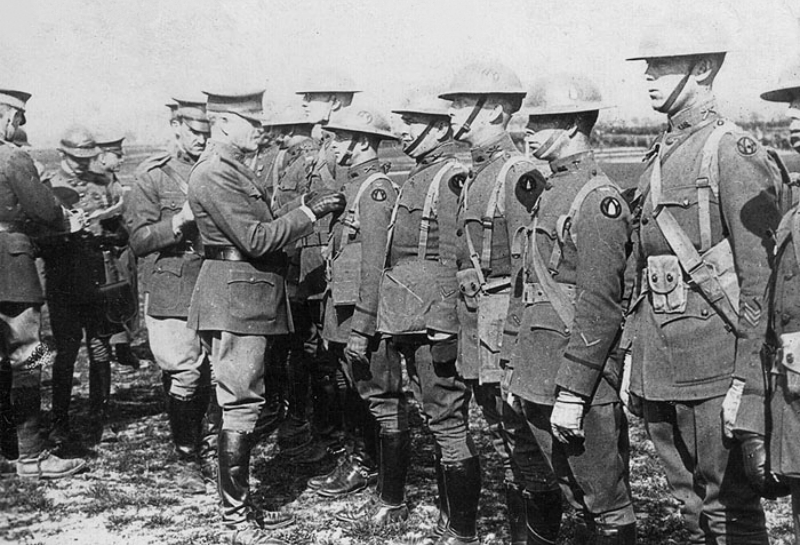(W)Archives: World War I and the “Lesser Included Threat”

One of the most problematic terms heard in the halls of the Pentagon during the Cold War was “lesser included threat” or the “lesser included case.” The idea was that if the U.S. military was prepared to fend off a large threat—typically the Soviet military—then it was certainly equipped to defeat smaller-scale threats, such as the military of a lesser power. During the dying moments of the Cold War, the Gulf War against Iraq seemed to validate the idea of the lesser included threat. Saddam’s military was just a small, less competent version of the Warsaw Pact, and the U.S. and its coalition partners cleaned its clock. Today we see the concept applied to things like nuclear proliferation and nuclear terrorism.
While the origin of the phrase itself is unclear, I suspect the idea may have come out of World War I, in which the U.S. Army helped defeat the very large and technically proficient German army. Soon after hostilities ceased, the commander of the American Expeditionary Forces (AEF), General John J. Pershing, ordered a probing lessons-learned project. Then in 1920 he became Chief of Staff of the Army where he oversaw a sweeping relook of the U.S. Army’s doctrine. The result of all this deliberation was the Field Service Regulations, United States Army, 1923. Obviously with the German army in mind, the preface stated:
The Field Service Regulations are drafted from the viewpoint of a war against an opponent organized for war on modern principles and equipped with all the means of modern warfare. An army capable of waging successful war under these conditions will prove adequate to any less grave emergency with which it may be confronted.
This was as good a summary of the idea of the lesser included threat as one could hope to find. This document remained in effect until 1939. While its replacement had no similar phrasing, the idea was now “out there.” World War II, in which the United States again played a key role in beating a large and technically proficient German army probably just reinforced the idea.
Unfortunately, the idea that a military force is inherently prepared to respond to all lesser included threats is dangerous because it appeals to common sense and yet is untrue. The key idea that it misses is that threats don’t just differ in scale but also in kind, as some analysts have recognized since at least the 1970s. The military designed to defeat the Germans or the Soviets is not necessarily able to defeat insurgents, terrorists, or other threats that we haven’t thought of before. The creation of Army Special Forces in the 1960s was an acknowledgement of this fact, as were the resurgence of counterinsurgency training and doctrine in the 2000s and the debate of the 1990s and early 2000s about creating specialized peacekeeping units.
Nevertheless, the idea is persistent. For instance it appeared in U.S. Army doctrine of 2001 (now superseded) which said: “The doctrine…recognizes that the ability of Army forces to dominate land warfare also provides the ability to dominate any situation in military operations other than war” and “the Army’s warfighting focus produces a full spectrum force that meets the needs of joint force commanders…in war, conflict, and peace.” Similarly, one Air Force officer has suggested that his service is using a questionable “lesser included” argument to support the F-35.
In fact, one could argue that the disjuncture between reality and the idea of the lesser included threat is the dominant theme of American military history since 1991. Something else to blame on the Kaiser.
Mark Stout is a Senior Editor at War on the Rocks. He is the Director of the MA Program in Global Security Studies and the Graduate Certificate Program in Intelligence at Johns Hopkins University’s School of Arts and Sciences in Washington, D.C.

